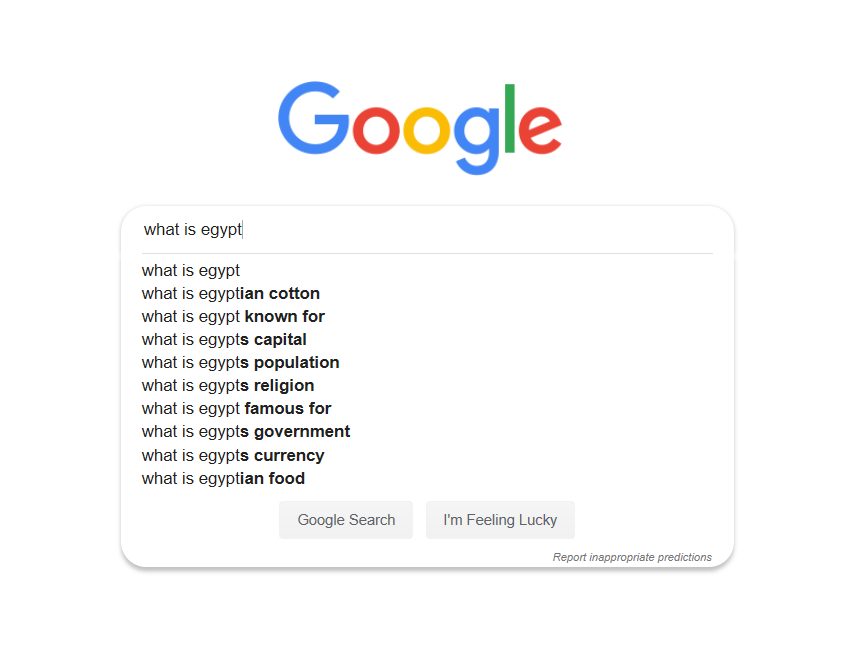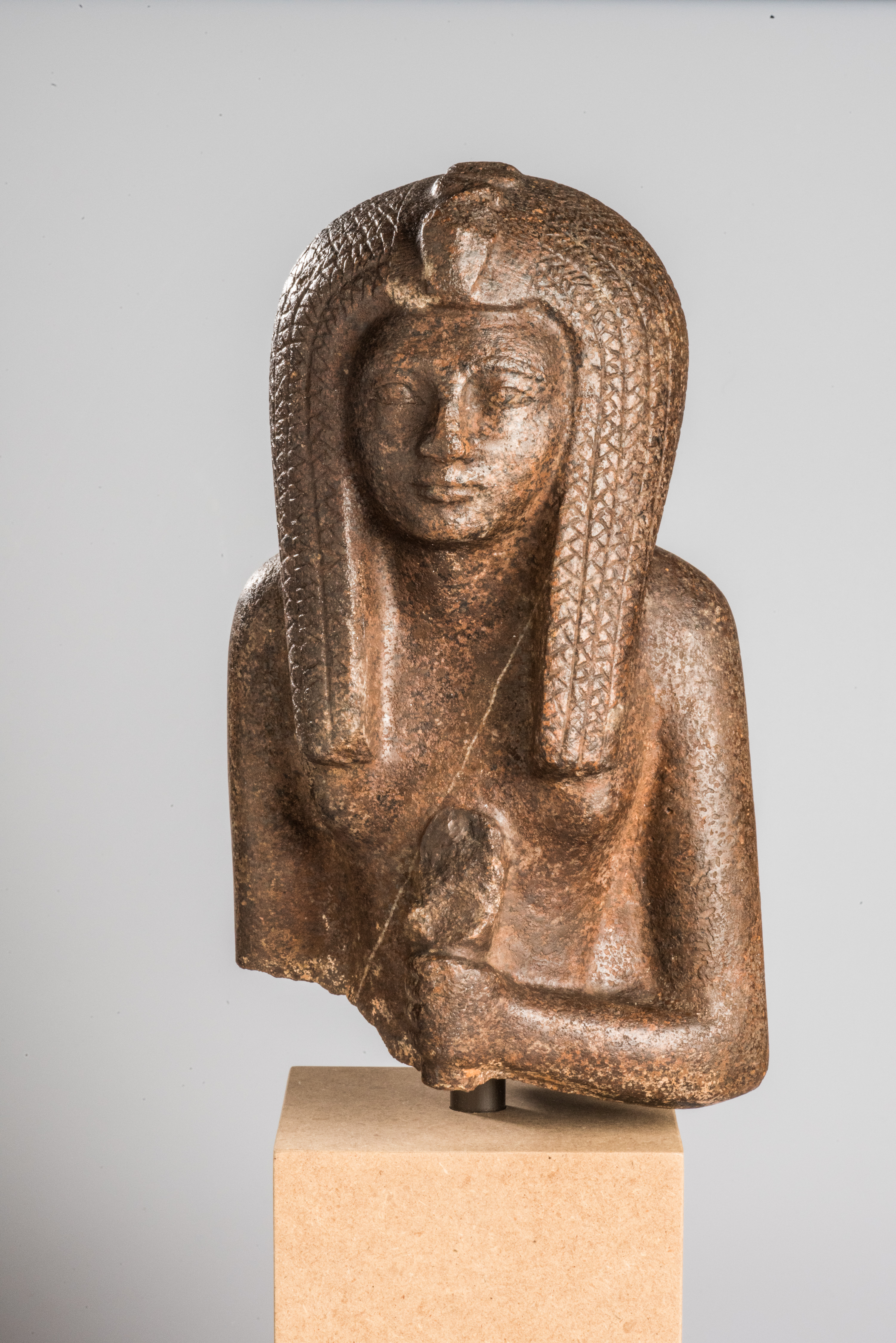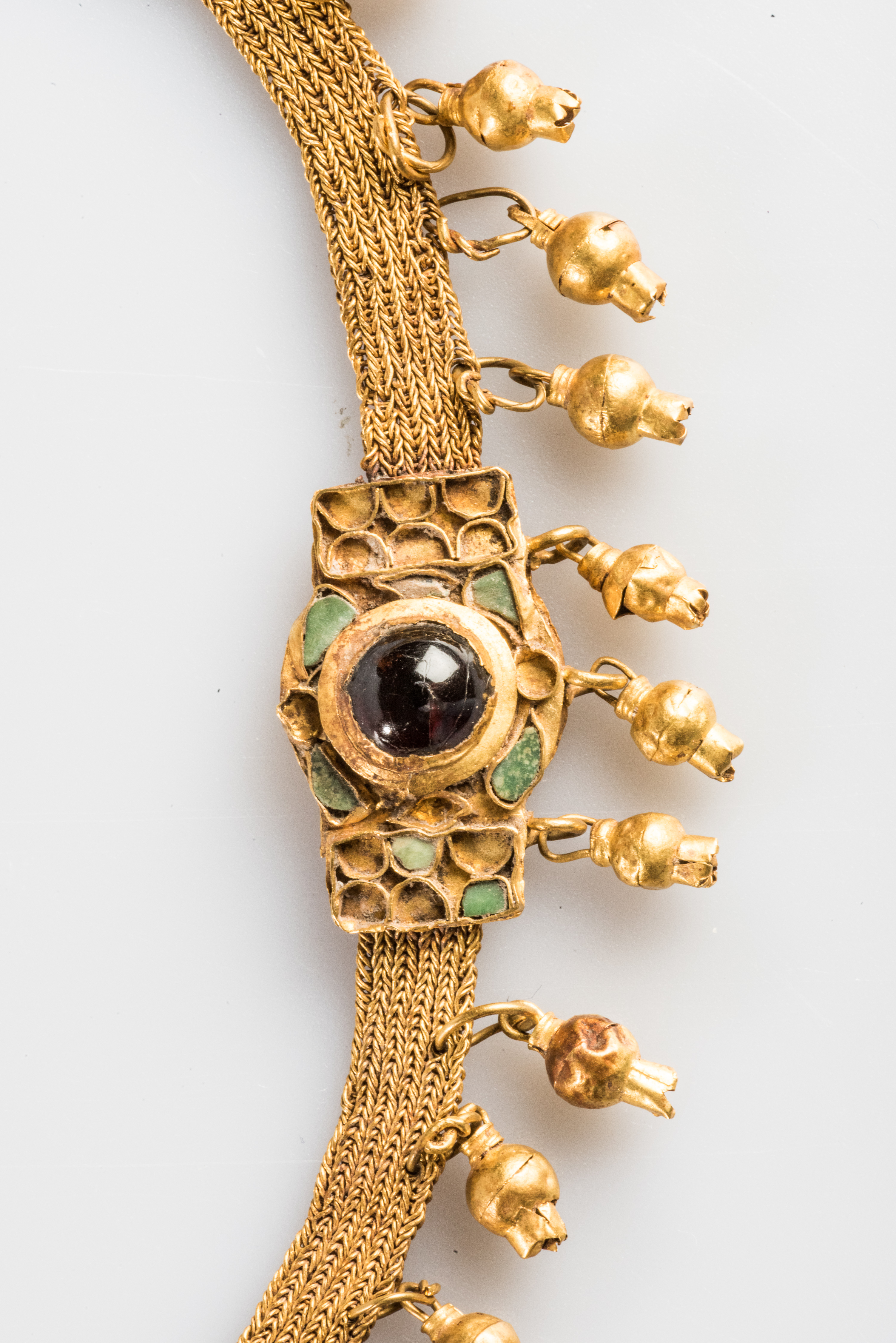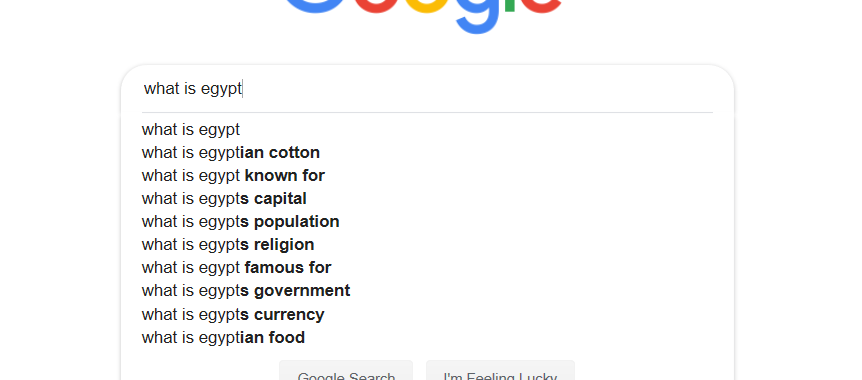
CMC Blog
Egypt’s Most-Searched Questions
By: Chris Dobbs, Copywriter/Editor

A sample of Google's Egypt questions
Museums answer questions. But who’s asking? One place that’s full of questions is Google. In Most-Searched Questions, we’ve taken it upon ourselves to answer some of the most interesting questions the world has ever asked Google. Welcome to Most-Searched Questions, Egypt edition!

An Egyptian queen with a 3-part wig circa 1550 BC from Egypt: The Time of Pharaohs
What were Egyptian wigs made of?
Big hair was a sign of health, fertility and youth for both men and women in ancient Egypt. Wigs in ancient Egypt were constructed out of human hair or palm fibers dipped in beeswax. Both wigs and natural hair were also colored using dyes. Hair was shaped using products made from fats and oils, as well as human hair extensions.
Wigs were as much an accessory in ancient Egypt as any piece of jewelry. Elaborate hairstyles were a common way Egyptians tried to distinguish themselves at festivals.
What did Egyptians wear?
Ancient Egyptians wore clothes made of linen, a cloth woven from flax. By the second half of the first century BC, wool fabrics made from sheep and goat hair were increasingly popular.
Because linen doesn’t take dyes very well, and because Egypt’s harsh son quickly bleaches away color, linen was mostly worn in shades of white. However, Egyptians were skilled at creating green-colored linen from green flax. Green clothes were a sign of high status because the color would be brightest when it was new.
While cloth made from flax was relatively common in antiquity (the term “linen” is partially derived from the Latin name for the flax plant, linum), ancient Egyptians perfected its manufacture. It was woven at all levels of society and worn by rich and poor alike.

Elaborately braided gold wire and garnet beads from the 3rd-1st century BC.
What was ancient Egyptian jewelry made of?
Egyptians wore all sorts of bling: rings, bracelets, necklaces, collars, diadems and “pectorals,” large amulet-like pendants worn on the chest “above the heart.” Gold from Nubia was the most important ingredient. Semi-precious stones — turquoise, lapis lazuli, carnelian and agate, for example — were used with glass as inserts. Tiny beads would provide further decoration, either on the surface of the piece or twisted into the owner’s hair. Men also wore jewelry, though of less variety. Collars, arm bracelets and pectorals were worn by male high officials.
What would the Pharaoh wear?
You can recognize Egypt’s kings and queens by looking for a few key symbols. First a special crown, such as the striped nemes. Pharaohs were also depicted with pointed, braided beards (even the female pharaohs!) and holding crooks (heqat) and flails (nekhakha). The crook and flail symbolized the pharaoh as a shepherd, who could treat his flock kindly or harshly.
Who built Abu Simbel?
Abu Simbel, now a UNESCO World Heritage Site, is an ancient Egyptian complex primarily consisting of two massive stone temples. It was built by Ramses II in the 13th century BC on ancient Egypt’s southern border. It commemorates the Battle of Kadesh between the New Kingdom of Egypt and the Hittite Empire.
You can get more answers, and even ask your own questions, at Cincinnati Museum Center. Egypt: The Time of Pharaohs is open through August 18.
Museum Admission
Includes Cincinnati History Museum, Museum of Natural History & Science and The Children’s Museum.
| Adult (13+): | |
| Senior (60+): | |
| Child (3-12): | |
| Member Adult: | FREE |
| Member Child: | FREE |
Members receive discounts!
Become a Member today to save on programs, exhibits and films throughout CMC.
Museum Hours
Open Thursday – Monday
10 a.m. to 5 p.m.
Closed Tuesday and Wednesday
Closed Thanksgiving Day and Christmas Day
Member’s-only early entry: Saturdays at 9 a.m.
Customer Service Hours:
Monday – Sunday, 9 a.m. to 5 p.m.



